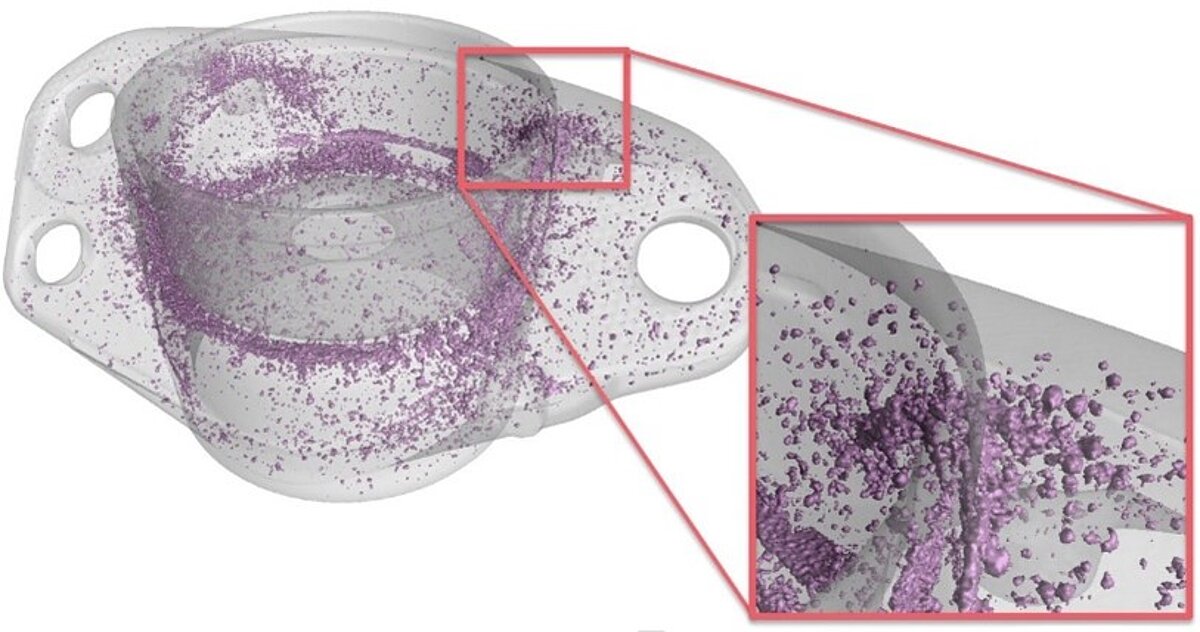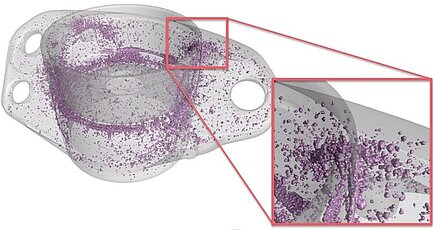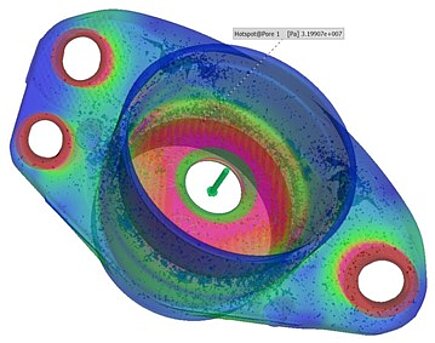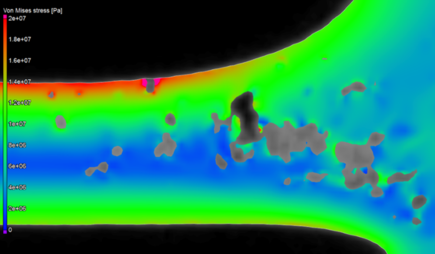Formation of pores in molded castings

From aircraft construction, shipbuilding and automotive engineering to medical technology, mold casting is an important component in product manufacturing. Geometries are designed to be as light as possible in order to save material and weight. As a result, the components are often already at their limits in the FEM calculation. There is hardly any room left for material defects. Especially when pores appear at points that are highly loaded.
The modeling of pores in conventional FEM systems is time-consuming. If necessary, one therefore limits oneself to a few critical pores at or just below the surface. The result is questionable, and simulating the component with these selected pores still requires a great deal of effort.
"This gap was unacceptable for us," says Stefan Merkle, managing director of Merkle & Partner GbR. "Therefore, we complement our simulation technologies with tools from image processing."
The basis for the simulations is software from the company Volume Graphics GmbH. In this process, components are completely X-rayed via industrial computed tomography (CT). From the recorded projections, the software reconstructs a three-dimensional volume including all information about materials and geometries.
Thus, at Merkle & Partner, the molded parts are measured section by section by computed tomography and prepared as a volume model. Mesh-free solution algorithms (immersed boundary solvers) can be used to determine and evaluate the stresses of the real component, assuming purely linear elastic behavior.
"These calculation possibilities are new and are currently far too little used," says Stefan Merkle. "Based on appropriately networked technologies, strength verifications can be performed despite pore formation - or, in turn, causes and solutions can be worked out."
According to Merkle & Partner, derived meshes for conventional FEM programs based on CT images are still dreams of the future, but sooner or later they will offer the possibility of including all nonlinear effects.


